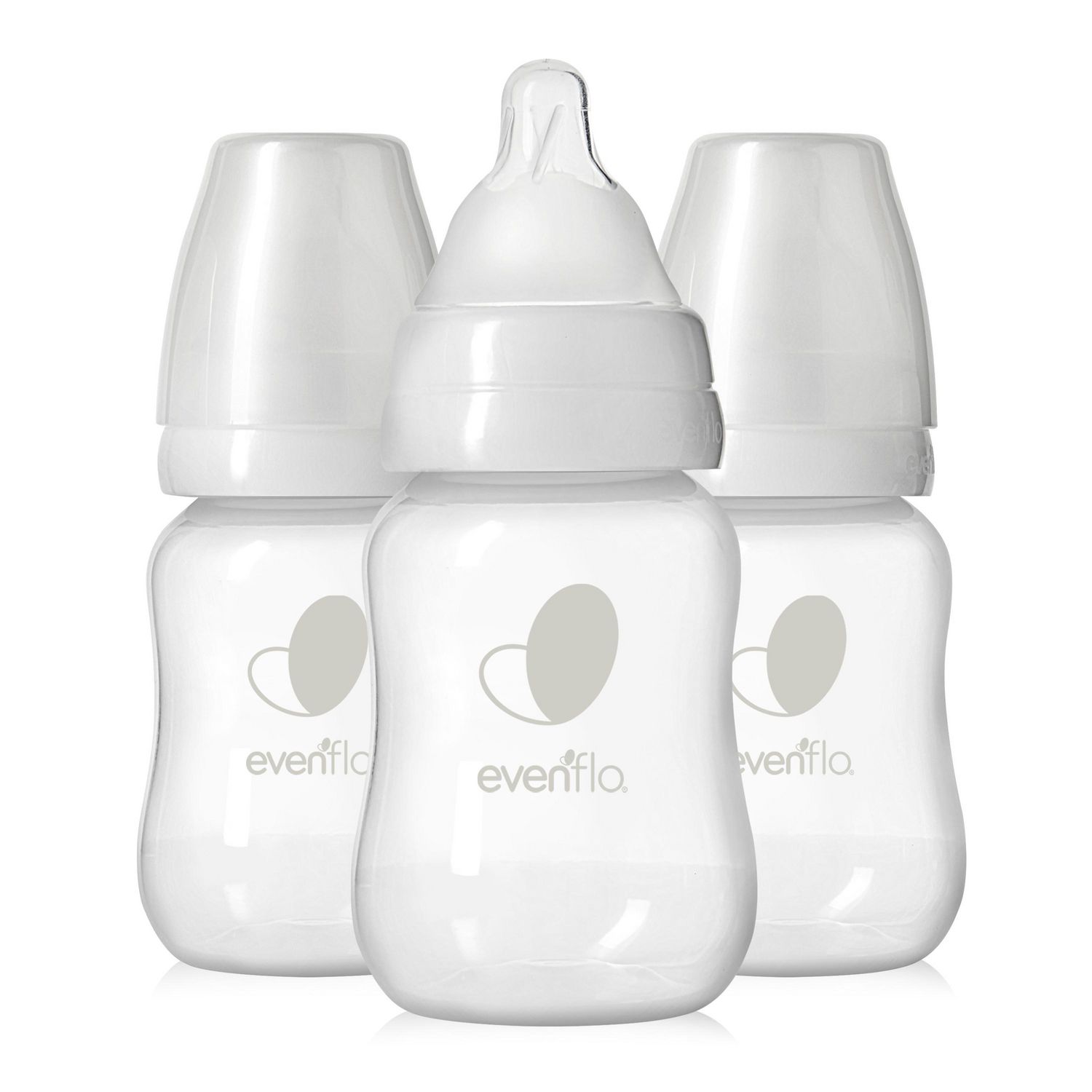Breastfeeding is a journey that ebbs and flows. The road includes quiet evenings bonding with baby on the breast and the convenience of not preparing bottles or paying for formula. Once breastfeeding is well established, it is an experience often thoroughly enjoyed by both mom and baby. However, every mother’s breastfeeding journey is different. There may come a time when you want or need to stop nursing your baby, for whatever reason. Switching from breast to bottle feeding can be prove to be quite hard on both of you. It can get out of hand when your baby refuses to take a bottle and you really, really, really want them to!
Before we get into this, please know that there are alternate options to feeding your baby with a bottle. Some of these include using a spoon, finger or an open cup.
In addition, there are alternate options to switching to formula, including manually expressing or pumping breast milk, or feeding your baby who is older than six months a variety of solids while away for the day and continuing to breastfeed in the mornings and evenings at home. The latter can especially help with the transition back to work as continuing to nurse will help you both have special bonding time together. In addition, the immune properties of your breast milk can help prevent your baby from getting sick when starting at a childcare centre.
It really isn’t worth stressing over it if your baby refuses to take a bottle. But, if you’re still interested in helping your baby take a bottle, here are some tips to ease the transition.
Find a Bottle That Breastfed Babies Love
There are hundreds of types of bottles out there, and you can easily spend a small fortune (OK let’s get real – a LARGE fortune) trying out bottles only to find your baby refuses them.
So do your research. Ask friends and family which ones worked for their breastfed babies, but try not to go too crazy. Anything that mimics the softness and slow-flow of a breast should work great. Make sure you purchase a small pack to try first before buying the whole set and finding out the hard way that your baby will not even try it.
Some recommendations:
- Many breastfed babies prefer latex or rubber nipples as opposed to silicone as they are softer. They do wear down faster though so keep an eye on any wear and tear and replace as needed.
- Choose a bottle that acts like a breast moreso than looks like a breast. Many of the expensive bottles available right now touting to be “breast-like”, don’t actually allow your baby to latch on deeply. Look for one that has a wider base and a gradual slope.
- Babies don’t care how much a bottle costs – Don’t go for the hi-tech ones, but rather ones that have been around forever.
- If your baby is older than six months and refusing the bottle, you could go straight to an open-faced cup. Younger babies can immediately drink from a spoon, fingerfeeder or medicine cup.

The Evenflo Balance bottle is one that is often recommended by IBCLCs. The nipple’s gradual slope allows baby to latch comfortably and deeply.
Switching From Breast to Bottle-Feeding Doesn’t Need to be Stressful
First of all, please make sure to go easy on you and your baby – just as breastfeeding is a learned skill, switching from breast to bottle feeding is something new and can be anxiety provoking for everyone involved. Take a deep breath and remember that you will want to ease into this transition slowly, for your breast’s sake and baby’s too.
Also remember that just because you are going back to work or are wanting a break doesn’t mean that you have to entirely quit breastfeeding. Many babies of working moms do well with taking expressed breast milk or homo milk during the day and then nurse before and after daycare. This article by Jack Newman about returning to work is an amazing resource for all working moms who breastfeed out there!
Pumping and Hand Expression
If you are having a hard silagra by cipla time making the switch from breast to bottle feeding, you will most likely find that convincing them with breast milk as opposed to formula will be easier. You can either manually express breast milk (check out that link for more info!) or use a pump. A good time to try to pump or express extra while you’re still breastfeeding is in the early mornings. This is usually when your breasts are at your fullest, and if you have lots you could pump one side while you feed from the other.
If you need some help learning to pump, you can check out my online pumping class, available worldwide!
With your expressed breast milk in the bottle (just half an ounce or so to start), you can then try different things to try to get baby to take the bottle:
- Heating the breast milk up to body temperature (do not microwave)
- Warming up the tip of the nipple slightly
- Applying expressed breast milk or their favourite sweet puree to the bottle tip to entice them (NEVER use honey due to the risk of botulism)
- Having dad or another caregiver try to give a bottle when you’re not home
- Latching baby on to the breast, and then switching quickly to a bottle tucked under the arm
- If that position doesn’t work, try some others: lying sideways facing out, sitting up in an infant seat facing you, swaddled or while rocking/bum patting
- Starting with just having your baby play with the nipple, then after a few days dipping it in some expressed milk, then after a few more days adding some milk in a bottle
Hopefully this has worked! Hooray! (If not I’m very sorry and I am crying on the inside for you… Really, I have been there).
Adding Formula if You Choose (Not Required)
Once your baby will take the bottle with expressed breast milk, you could decide to change to formula. If that is your prerogative, this article on formula feeding will be helpful in determining which type of formula to use and how to prepare it safely. Please know that according to Jack Newman, babies older than 6 months and who continue to breastfeed 3-4x/day can be given homogenized milk instead of formula. Just to be safe make sure to talk with your baby’s doctor before making any changes.
Many breastfed babies don’t like the taste of formula, which isn’t very surprising – breast milk has an entirely different taste and smell. A helpful way to ease a baby in is to mix the two together. First start with 25% formula mixed with 75% breast milk. Once they tolerate that fine, switched to 50% formula and 50% breast milk. And so on and so forth until they are taking formula on its own.
You Got This Mama!
Hopefully this article gave you some helpful tips & tricks to try when you and your baby are making the transition from breast to bottle feeding. I know how stressful it can be to both of you, and I wish you all the best! If you are still having difficulties, please seek out support at your local Laleche League or lactation consultant… Oftentimes being able to talk to someone who gets it can make all the difference.
And remember! If your baby won’t take the bottle, it’s not the end of the world. There are other options out there – cup or spoon – or maybe stop for a week or two and try again when both of you are less stressed. I know, easier said than done with impending timelines but you’re not going to do any good to worry yourself sick.
Need some extra help? Book a one-on-one session with me or check out my online pumping course.




One of the best things I did when my youngest was around 5 or 6 weeks old was introduce a bottle of pumped milk. We wanted him to be occasionally fed by dad or other family members so I could have a break, even though I wanted to be nursing full time up until I returned at work. Many people said not to, that it would cause “nipple confusion” but that was not the case! When I did return to work at 10 weeks baby was familiar with a bottle, and I was familiar with pumping! 🙂 I used Medela bottles with both of my boys! 🙂
Great tips here! I’ve heard of many babies who refused bottles but us working mamas don’t have much of a choice sometimes. Especially if we have to go back to work after 3 months. My kid refused the breast at first so was always preferring the bottle, so I had a different issue. The breastfeeding journey is definitely something else! HA
Great tips! Switching to a bottle was really easy for us, but I’ve heard lots of stories about the babies who refused bottles. From now on I will refer my mommy friends to your article 🙂
Great tips here. I had to supplement with formula very early on in my very difficult breastfeeding journey so getting Cygnet to take a bottle was never an issue. I have friends who really struggled though. Pen x #KCACOLS
This is going to be really useful in a couple of months! Also, you should change your Hospital Packing Checklist to say partner/support. Partner is inclusive and support sounds better than helper! #kcacols
Sounds like great advice , we did both breast and bottle with all the kids. Every baby is different though and I’m sure these tips will help mum’s out there! #KCACOLS
This is such great advice.
Bottles are a must-have for working moms, and fortunately I was able to stay home. This turned out to be a good thing because at around 6-7 months old, my once bottle taking baby would never take another one. It was the strangest thing, haha. Kids are all so different-thanks for sharing! <3 #KCACOLS
You are so full of amazing info!! I wish I had this about two years ago when the twins were having trouble breastfeeding and we needed to supplement. 🙂
I switched to bottle feeding quite early with my two for many reasons which I won’t bore you with. They both got it very quickly but like you said I chose bottles that had been around for a while. After the first bottle feed I really relaxed so it came very easily to all of us. I found it less stressful than breast feeding and therefore my daughters did too. Some great advice here.
#KCACOLS
So many great tips, this post is awesome and I wish it had been around when I had younger children! Thanks so much for linking up at #KCACOLS. Hope you come back again next Sunday
Hi Buddy,
Hope you are doing great!!
This is an excellent posts. So many women think they can only breastfeeding or only formula feed. I made this mistake with my first daughter when I struggled with milk supply. I completed gave up breastfeeding. Now with my second child, we happily do a little bit of everything, nurse, express milk, and feed formula. Baby is happily fed, and I feel like I’m giving her the best of both worlds.
Thank you so much for this article. One of the most important tips to add to this article is time. Like adults, babies too need to explore the new feeding habits before fully committing to it. Giving them that time will enable them transition smoothly.
Also, when it comes to timing, one little tip that usually helps with the transition is to ensure that you time your baby bottle feeding while giving yourself enough time to do it properly. Allowing your baby to feed slowly will also help her/him to explore different feeding positions and this will help the baby ease to bottle feeding. Another advantage to this is that you can try different feeding positions for your baby if you discover that your baby is disinterested but not distressed and you need to feed him/her at that point. But remember, when your baby starts to cry when you try it, it’s best to stop and try again at another time.